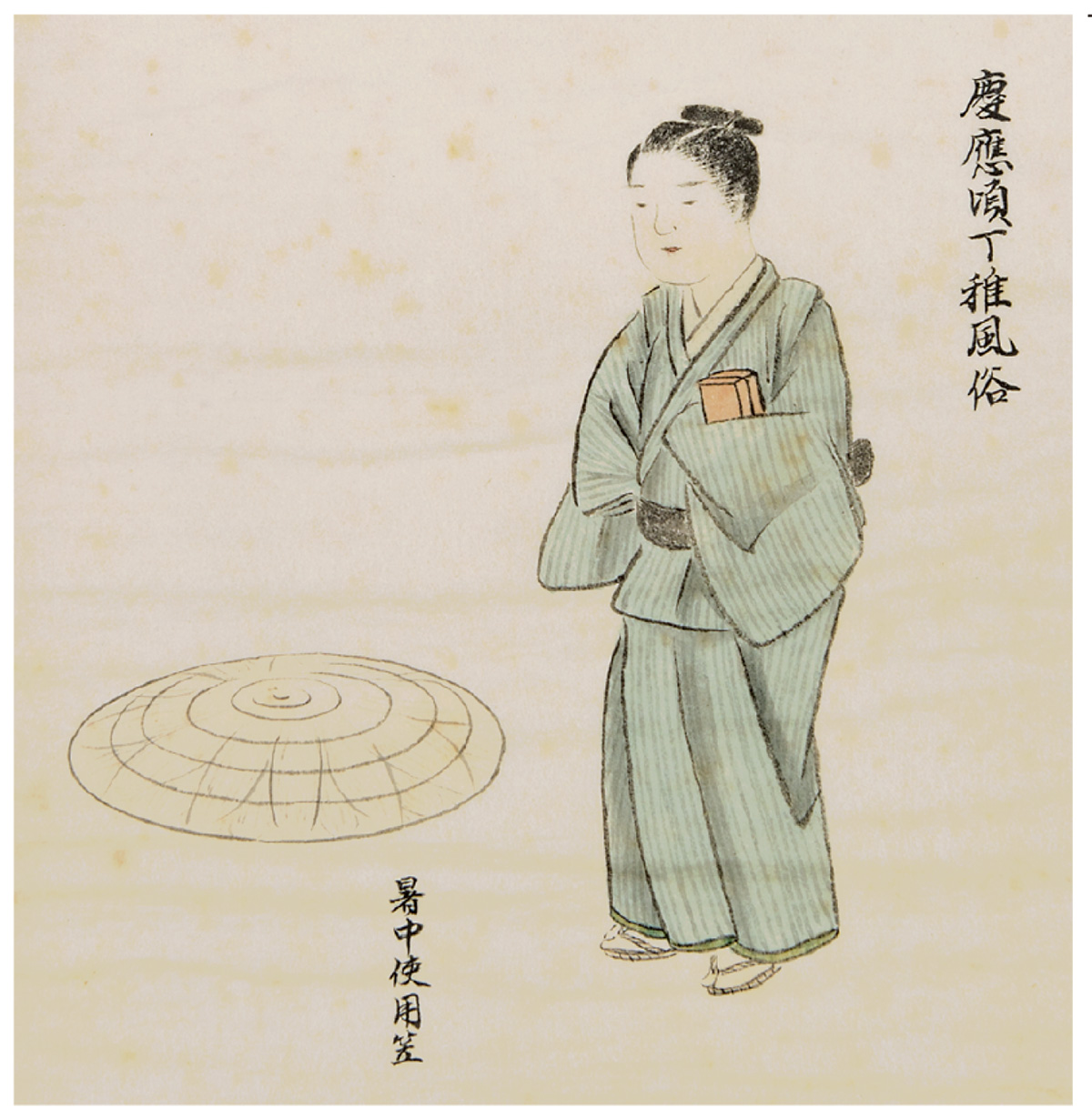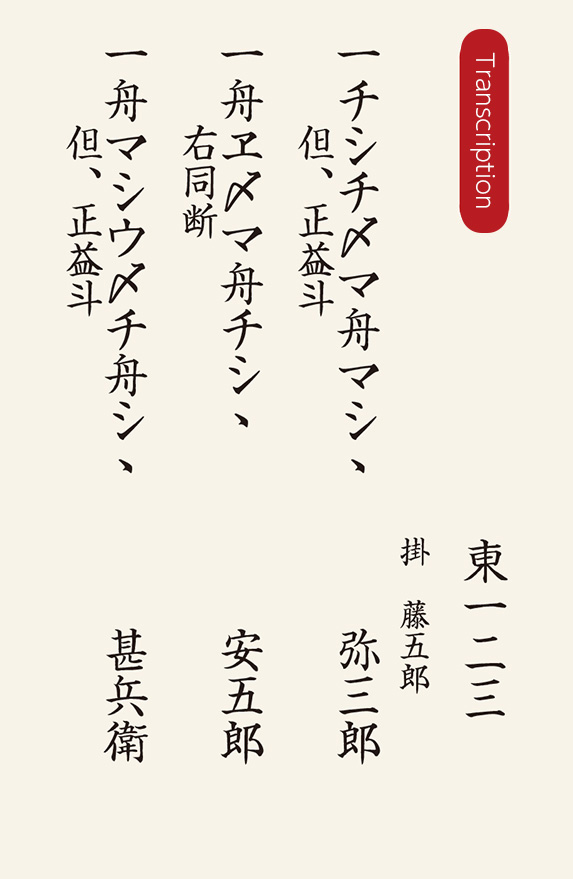19 Employees (1): Promotions and Pay

Number of Employees in the Kimono Fabric Division
Mitsui maintained a large workforce. Employees were divided generally into sales staff (tedai), apprentices (minarai), and manservants (genan) who handled miscellaneous tasks, such as working in the shop kitchen. The kimono fabric division had an especially large number of employees due to the nature of fabric procurement and sales. By the mid-18th century, the Edo kimono shop, the largest in the division, had over 250 employees, reaching a peak of 342 in the spring of 1768. The total of employees in Kyoto, Edo, and Osaka during the same period exceeded 1,000.
Employment and Place of Origin
When Mitsui opened its first shops in Edo, most of its sales staff and apprentices were natives of the Kanto region. In the 1720s, Mitsui began recruiting people from all over Kyoto and sending them to Edo. At the same time, the Kyoto kimono shop did not hire its sales staff and apprentices from the Kyoto area. In later years, however, the majority of the Kyoto kimono shop’s sales staff and apprentices came from Kyoto. Hiring is thought to have been dependent on personal relationships, such as with current or former sales staff.
When an employee was hired, a guarantor was required to submit a letter of guaranty (ukejo). After a probationary period, employees were assigned to a shop in Kyoto, Edo or Osaka.
Employment Ranks and Promotion
There were strict hierarchical divisions between employees. They were divided into (1) sumikomi, who worked while boarding at stores, and (2) bekke, who commuted to work from their residences. Following is a typical example of an employee’s progression.
Sumikomi A boy is taken on as an apprentice at age 13. When he reaches 17, he comes of age and becomes an ordinary sales staff (hira tedai). There were roughly four ranks for hira tedai. After approximately ten years of service, he becomes a ranked sales staff (yakutsuki tedai).
Bekke After around 10 years of working as a ranked sales staff and rising four ranks, at age 39, he becomes bekke and is authorized to establish his own shop (noren wake) (→20). He is also free to live independently and marry. Some associates continue to work in the same shop, commuting from home. In such a case, the individual would work as a ranked sales staff with approximately four levels of rank. By the time he reached the highest rank (motojime), he would be around 60 years old. Extremely few employees continued long enough to reach this rank.
Renumeration
Employees lived in the shop where they worked, receiving food and clothing. They did not receive wages in the modern sense. However, sales staff were entitled to stake money (motodegin) that was set aside and accumulated during their term of employment, and they could receive bonuses (hobi).
Motodegin Paid upon the employee’s voluntary retirement (or, for bekke employees, noren wake). Employees were qualified to receive severance upon coming of age.
Hobi Several types of bonuses were paid periodically depending on the employee’s position. These included kozukai, yakuryo, nenhobi, and warigin. Normally such funds would be deposited with the shop, but they could be withdrawn for use by the employee.
Sales staff would allow their bonuses to accumulate with the ultimate goal of becoming independent merchants. The amount of severance and bonuses rose sharply as an employee rose in rank. This was to discourage veteran employees with many years of experience from setting up their own business.
Other Employees
Mitsui’s financial division also hired employees. For example, in 1805, the Kyoto exchange store had around 19 employees, far fewer than the number for the kimono division. Beginning in the 1830s, the terms of employment at the Kyoto exchange store worsened. Turnover was greater than at the Kyoto kimono shop, and average years of employment declined.
Along with employees, many other individuals worked in Mitsui shops, such as craftsmen processing textiles, and carpenters who repaired and maintained the buildings. The circle of people supporting Mitsui’s business was very large.

This is a historical record of the kimono division, recording sales performance and days worked by sales staff. Figures for each shop in Edo and Osaka were compiled twice yearly by the Kyoto kimono shop. Records survive from 1731 to 1870, a period of approximately 130 years, though with some records missing. The sales figures have been encoded by replacing them with certain Japanese characters. Each merchant family in the Edo period used its own unique code, to protect sales information from outsiders.

Description
This is a record of sales made during the first half of 1797 by the staff of blocks 1 through 3 of the east showroom (higashimise) of the Edo kimono shop. The managing salesperson is Togoro, overseeing Yasaburo in block 1 (sales of 88 kan 330 monme of silver), Yasugoro in block 2 (107 kan 380 monme), and Jinbe in block 3 (139 kan 810 monme). All sales were cash.

This painting in the style of the Edo period was created during the Taisho era. The artist is Ueda Nanrei, a former employee at the Osaka exchange store who found fame as a painter. The apprentice wears late Edo-style clothing.

